Thought Leadership Studio Podcast Episodes:
Worldview Alignment for Strategic Growth with Chris Peterson
Episode 101 – Marketing Across Divides: How Understanding Liberal and Conservative Belief Systems Unlocks Hidden Customer Alignment and Builds Empathetic Influence
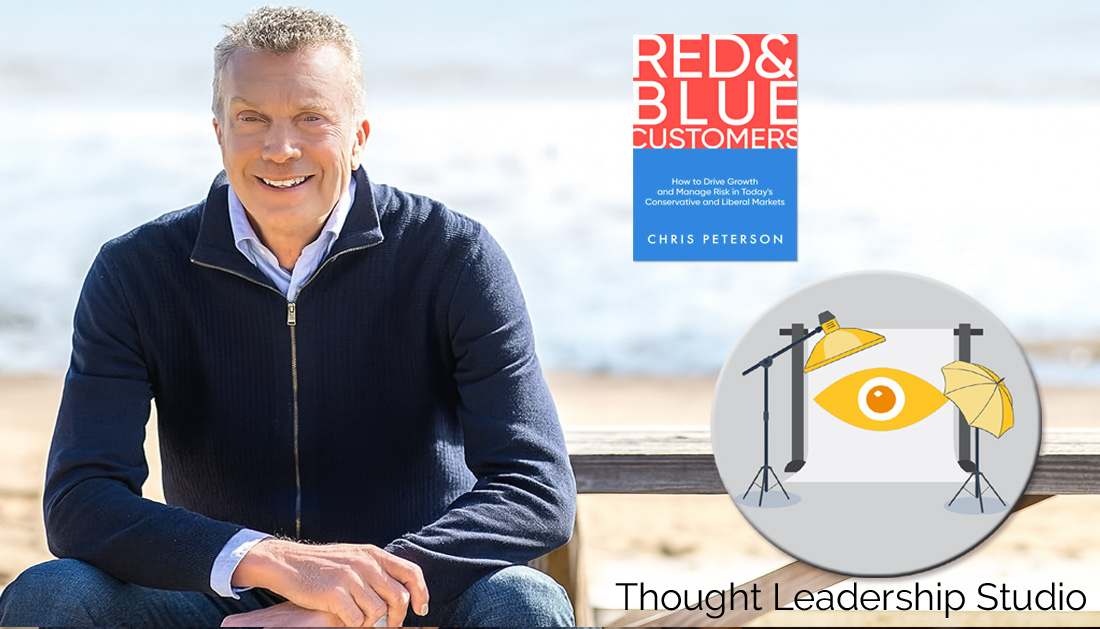
#branding, #communication, #consulting, #customerexperience, #entrepreneurship, #influence, #insight, #interview, #marketing, #marketingstrategy, #marketlistening, #marketresearch, #paradigmchange, #paradigms, #paradigmshifts, #persuasion, #thoughtleadership
Or Click here to listen or subscribe on appWhat this episode will do for you
- Explore Consumer Behavior Through Worldview: Discover how liberal and conservative belief systems shape purchasing decisions, brand preferences, and media consumption patterns.
- Understand Why Messaging Is Never Neutral: Gain insight into how your company’s worldview - often rooted in its founder - can align or conflict with your audience’s values.
- Apply Worldview Awareness to Marketing Strategy: Learn practical methods for identifying your market’s ideological lean and tailoring your messaging, tone, and positioning for better alignment.
- Bridge Polarization With Strategic Empathy: See how curiosity and research can help business leaders understand both sides of the ideological spectrum - improving both connection and growth.
- Activate a New Lever for Business Growth: Discover how belief-driven segmentation can enhance market fit, avoid accidental alienation, and uncover fresh growth opportunities.
Chris Peterson.
In this episode, I’m joined by Chris Peterson - marketing pioneer, author of Red & Blue Customers, and co-founder of Lifemind, an AI-agent platform for regional and national brands.
Strategic Thought Leadership includes applying insight for empowerment-based influence. Chris models this attribute well by revealing how political worldviews shape consumer behavior - and how understanding this can become a powerful lever for growth.
Drawing from deep research and decades of agency experience, Chris shares how brand messaging, market fit, and belief systems intersect - and how leaders can use worldview awareness to connect across divides without taking sides.
Some of Chris Peterson's coordinates:
Curated Transcript of Interview with Chris Peterson
The following partial transcript is lightly edited for clarity - the full interview is on audio. Click here to listen.
Chris McNeil: So I am your host of Thought Leadership Studio, Chris McNeil, and I'm sitting across Zoom and the Atlantic Ocean from Chris Peterson in Milan now, who's the co-founder of Lifemind, an AI-agent platform designed for national, local, and regional marketers.
And with over 30 years as a marketing pioneer and entrepreneur, Chris has founded two digital marketing agencies, launched one of the first digital agencies in the nineties, earned recognition for the Wall Street Journal, which is later acquired.
In 2020 Chris discovered Pew Research highlighting the deep divide in how Democrats and Republicans perceive the world. This insight led 'em to explore how political beliefs shape consumer behavior and was the genesis for red and blue customers that we'll discuss. Great to have you here, Chris, or have you there.
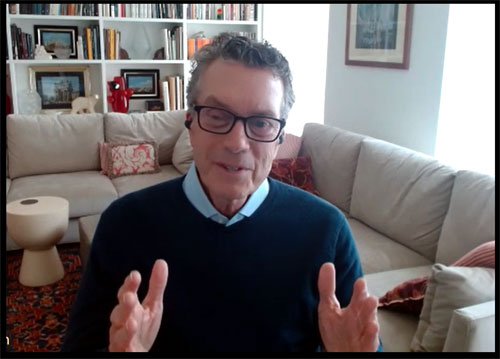 Chris Peterson: Hey, thank you. It's great to be here. .
Chris Peterson: Hey, thank you. It's great to be here. .
A Research Journey Into How Political Worldviews Shape What People Buy
Chris McNeil: So maybe to give our listener who may not yet be familiar with your work, some context in particular around red and blue, was there a pivotal moment of awareness or an event that set you on the path to evolving this work?
Chris Peterson: Yeah, there was, and throughout my career in marketing, I mean I've been mostly focused on being a business person, but the aspect of marketing that I always enjoyed the most was human insight. And it was about understanding why people do what they do. Because in advertising, that's everything.
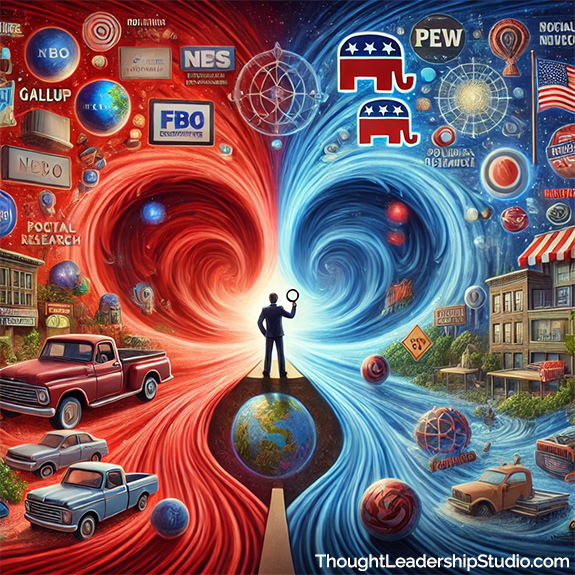 And so I always got along really well with the account planners and the research people and the strategy people. And so I am a research junkie. As a result, I read a lot when Gallup comes out with something, when Pew comes out with something, when I see all kinds of new insights come out, I just love reading it. And you mentioned this Pew research study in the intro, and that was December, 2020 and it was right after Joe Biden got elected president.
And so I always got along really well with the account planners and the research people and the strategy people. And so I am a research junkie. As a result, I read a lot when Gallup comes out with something, when Pew comes out with something, when I see all kinds of new insights come out, I just love reading it. And you mentioned this Pew research study in the intro, and that was December, 2020 and it was right after Joe Biden got elected president.
The fascinating thing about the Pew study was that it allowed voters for Biden and voters for Trump to basically say in an open-ended way what they wanted the other side to know about them. Okay, so you don't typically see open-ended questions in studies like this, right?
So I read, I don't know, a hundred responses from both sides. And what struck me was that both sets of people had authentic stories to tell. They were passionate and they also saw the world quite differently from each other. After I read so many, I was like, well, if these two groups see the world so differently, how could this not affect what they buy? And that was the kernel of the idea behind the book Red and Blue customers.
And so I set out and I asked myself, okay, if this is an interesting idea, then I would first have to find is there evidence that they buy different things? I'd have to figure out why they buy different things. What is it that's shaping their behavior that a business could use? And then what would a roadmap be for applying all this for growth?
It was really an exciting project because I've spent decades in the business and it's really hard to come across something new that changes how you think about customers. It's not very typical. So what I found was as soon as I just started doing online research around what liberals and conservatives buy, I found an enormous amount of evidence. I mean, anyone could spend 10 or 15 minutes and just Google the topic and you'll see it.
And it ranges from, Harris does an annual study for brand alignment between the two groups and they'll rank the top 15 brands for each group and there's only two or three that are shared on the chart. And then there's media consumption, there's the products they buy, there's the brands they align with. There was overwhelming evidence and that just got me started. I was off to the races.
And then the next step was to identify, well, what is really shaping the purchase decision? What's behind it? Because you see articles today about the differences in what they buy sometimes The Wall Street Journal ran a piece I think three or four months ago, turned it into kind of a game like pick which side aligns with which brands, but I wanted to get to why.
And so I researched that and I figured, well, if I could come up with seven or eight values or things that drive these decisions, I might have something. And I ended up finding 27, 20 differences and seven similarities. And then it was all based on research. It was, it's all research that comes out of social psychology, social anthropology and cultural geography. And that really formed the core of it.
And like I said, it was very exciting to work on because it all felt so fresh and new and yet so obvious it is just right in front of us. And yet as marketers, we fundamentally don't look at it.
Making Worldview Actionable: Aligning a Brand with Market Beliefs
Chris McNeil: That's fascinating and for a lot of reasons. So to condense that down to something that can be a little more grounded for the listener who might be wondering, how does this affect me?
So what does this mean to me? What would make that actionable for a thought leader, entrepreneur or business person in thinking about their messaging?
Chris Peterson: Yeah, so one of the big revelations in the work was that there's no such thing as a neutral message when it comes to this topic or very little. And what happens is in businesses that I studied is that almost without fail a business is the worldview of the business as more liberal or conservative almost always comes from the founder. And even if the founding of the business goes back 30, 40, 50, 60 years, it doesn't matter.
 There's this cultural imprint on the business from the founder or the original people as it relates to liberal or conservative. So then the question becomes how much is that being projected onto the market? And typically it's, I mean, in almost every case with the businesses that I studied, it ends up getting projected and then it becomes a question of does it align with the market that I want to sell to? Because markets, there's no such thing as a neutral market either.
There's this cultural imprint on the business from the founder or the original people as it relates to liberal or conservative. So then the question becomes how much is that being projected onto the market? And typically it's, I mean, in almost every case with the businesses that I studied, it ends up getting projected and then it becomes a question of does it align with the market that I want to sell to? Because markets, there's no such thing as a neutral market either.
Markets skew tend to skew a little or a lot liberal or a little or a lot conservative. And I don't mean far left far, right? I mean just a bit more conservative, a bit more liberal. And so having that awareness of that is huge, huge. And in working in marketing for so many decades, I mean we never talked about this, we never had awareness of any of this.
And when I really started digging into it, it started to explain some instances of campaigns that actually failed, which was interesting. So I think as an entrepreneur or a thought leader, I think being self-aware of what you believe when it comes to worldview, and I should explain real quick, I use the term worldview. Worldview is really the starting point. Worldview is liberal or conservative, it's defined roughly. There are some different definitions of it. It's basically what you believe to be true with an ideology being how you choose to move forward.
And politics is just an expression of worldview, okay? Politics doesn't drive these decisions, the purchase decisions, it's the worldview that does. It's the sets of values that people have and that, so having self-awareness around your own personal worldview, the folks around you maybe locally, and then thinking about your market and who you're talking to in terms of your audience and who your customers are, all of that becomes a source of opportunity for growth. Because if you can line these things up properly or manage them properly, then they become a new lever for all kinds of growth.
From Observation to Empathy: A New Paradigm in Audience Understanding
Chris McNeil: That makes sense. And there's a couple pieces of that that offer some roads to go down. I think it'd be very interesting to the listener, and one of them is just the worldview based, values-based model of marketing in general, which that's extremely powerful.
Now the theme of this podcast is Strategic Thought Leadership. So it's about challenging paradigms, challenging mental models, but you have to pick your battles. If you go after a deeply held belief system, it's going to be a tough road.
So you better really have something strong arguments behind it if you want to change minds of people, it's trying to talk somebody out of cheering for their favorite sports team, the identify with their belief systems. So where does that fit in terms of how do we help shape market perception?
Chris Peterson: Yeah, so love the question. One of the big revelations in all of this for me, and I have to say learning all this stuff was kind of funny because I look back on the career and I'm like, wow, I wish I'd known this before, but better late than never.
And one of the big revelations I had was that I had been thinking about marketing wrong when I looked back on all of my efforts. I've run several agencies, worked with global brands, startups. When we think about customers, we tend to put them under a microscope.
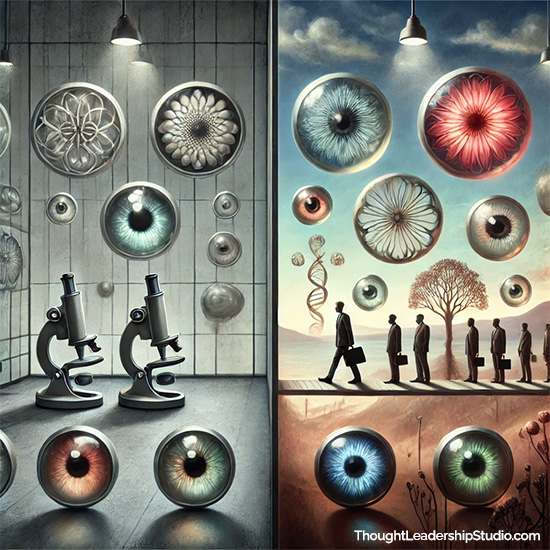 We tend to look at them from the outside in the ultimate metaphor for this, or not even a metaphor, but back in the days when people did focus groups, and not many people do these days, but you look through the one way mirror at the customers to see what they're doing and the decisions they're making, what marketing directions they like. And I realize that that that's not the way to do marketing.
We tend to look at them from the outside in the ultimate metaphor for this, or not even a metaphor, but back in the days when people did focus groups, and not many people do these days, but you look through the one way mirror at the customers to see what they're doing and the decisions they're making, what marketing directions they like. And I realize that that that's not the way to do marketing.
You have to turn the table to your point. It's like you've got to disrupt that paradigm and look through the eyes of the customer at the business. So to your point, the perception of the business, not the perception of the customer. And that became a very powerful way for me to think about audiences now.
So where does that take you? Okay, so as soon as you do that, you start to realize that your customers are made up of a whole bunch of different groups of people. They have different views, they have different worldviews. So some are going to be liberal, some are going to be conservative. There are other dimensions as well like generation and region and other things like that. B
ut the worldview piece I find to be particularly powerful, and what it forces you to do is learn about both groups in a more proactive way. Today we don't have a lot of incentive to learn about the other side, whatever side that is.
It doesn't matter if you're liberal or conservative, but if it's for business growth and understanding your customer and meeting goals, well that's a good reason. And so what ends up happening in these exercises when people read the book or read my newsletter, they say that, wow, okay, now I realize that both of these groups are just different ways of seeing the world.
The temperature comes down from studying this topic, And you can approach it in a far more dispassionate way, a more objective way and say, okay, well my customers are this or that. And okay, here's some values we can use to shape the marketing and let's create better fit and test this and see what the results are.
So to your point about how do you get someone to think differently if they're maybe entrenched with their own worldview, right. Well, I think I'm very optimistic that if people take the trouble to actually look at both sides as customers, as markets, you can't help but have that affect you personally as it did myself. And as I've heard from readers that it actually helps kind of understanding everyone in general.
Positioning with Perspective: How Worldview Shapes Market Fit
Chris McNeil: How does this play into how you represent your product or service or look to persuade an audience to embrace your messaging around it?
Chris Peterson: Well, what it involves is basically a couple of steps. The first step is pretty simple to look at who your customers are. Are they more liberal or conservative? Most people don't look at this, right? I never did for decades. And I think people will be surprised that how strong the skews can be. We've looked at some companies where the skews were very small. We looked at some data from a footwear company where skewed slightly conservative.
Right now we're working with two companies. One skews very liberal, one skews very conservative, but again, I don't mean far left far right? I mean there's just a strong majority of customers are liberal or conservative. So that's the first step. You have to understand who your customers are. You've then got to look at the market and see is that more liberal or conservative?
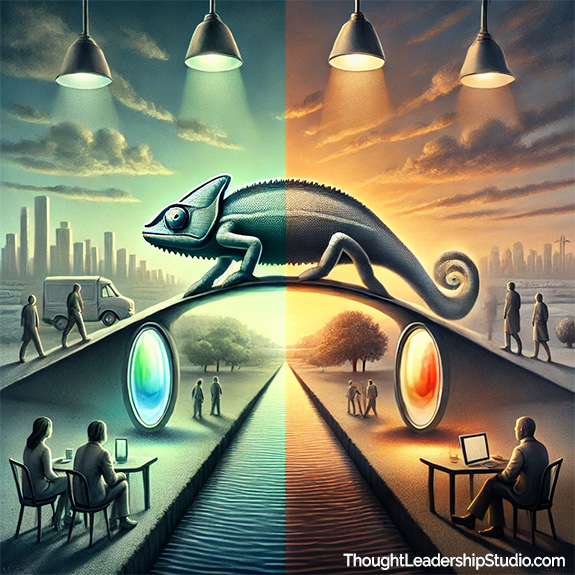 Your customers are probably a reflection of that market, not always because there might be a disconnect. But then it's like, okay, if I'm going to create stronger fit between my business, my products, and my customer, I need to now shape my marketing in a way that they see my product fitting into their lives better.
Your customers are probably a reflection of that market, not always because there might be a disconnect. But then it's like, okay, if I'm going to create stronger fit between my business, my products, and my customer, I need to now shape my marketing in a way that they see my product fitting into their lives better.
And that's the part of looking through the eyes of the customer At my business, I'm not going to force fit something on them. I'm going to look at the different types of values that my customers hold, and then I'm going to look at how can I shape my marketing to do that. So some examples of these values, I mean it has nothing to do with politics, it just has to do with belief systems that are hard to judge as right or wrong. Quite honestly, when you get down to kind of the core belief system.
So it might be perceptions of the future, this is kind of an easy one. Liberal customers generally want to, and this is all based on research. Liberal customers generally want, they see problems with the present, they want to fix it and create a better future. Conservative customers generally are more content with the present and therefore the future is more known to them. They would just assume the present stay as it is. And just that one set of values has dramatic effect on how you might promote, let's say a brand new innovative product that is a little bit disruptive.
In that case, you want to invoke, first of all, you probably want to target liberal customers first because they're going to be the early adopters, they're going to be the ones experimenting with new products. And then you want to shape the product as innovative new breakthrough. You might even shape it as something that comes from the future if you really want it to be more extreme. There are all kinds of other things you can do too with other values, which I can get into later and who your spokespeople are because even those categorize differently in the two groups.
And then on the conservative side, you might frame the product more as it's more reliable, it's established. There are people like you who use it and it's something that you should feel comfortable with. And those are two very different ways to possibly frame up the same product. Now with innovative products, you want to sequence it, you want to start with more liberal customers, and it's not hard to find them because the geography today has made the targeting of these two groups quite easy. Liberals tend to be more urban, higher population density environments, and conservatives tend to be in less lower population density environments.
The suburbs is where it gets a little trickier, but you can still identify the targeting. And then with conservative customers, they can come later. When you have success with a liberal audience, you can transition to a conservative audience because they will see the proof, they will see that the product is actually pretty good.
It survived the experimentation by the liberal customers and they will adopt it. And it's not that they don't want innovative products, it's just that they kind of want to see some proof. Now, a lot of this can sound like overstatement. You can always find exceptions to this, but these are trends in markets that I think marketers can take advantage of.
Teaching Belief Agility: How Flexible Thinking Creates Market Insight
Chris McNeil: That makes sense. And the way I see it is that when someone adopts a left or a right paradigm, it's almost as if a lot of their thinking is pre-made for them. You're expected to assume all of these assumptions. And I think back to some of my mentors who promoted things like "maybe thinking" rather than Aristotle and either or logic, something can be somewhere in the middle.
"I believe in UFOs" or "I believe UFOs don't exist" is very different from saying, "Well, I give them about a 70% chance of being something we don't understand and a 20% chance of being alien", for example, which is part of what I like to teach in terms of Strategic Thought Leadership is being a little more flexible with your own belief systems as a way to also make other belief systems in your marketplace more clear, which opens up opportunities because you can then sense an unmet value in your audience that could be satisfied by a fresh mental model that respectfully challenges a mental model that they hold about your category and maybe just how to use it or where it fits into their life, not something so deep as challenging, really deeply held beliefs we identify with, but just how we see how to use this product or service.
So given that, what can we do? And you spoke a little bit about this earlier, which are really like what can we do to gain more empathy for those who believe things that we don't through this kind of research and understanding and awareness?
Chris Peterson: Well, so there a couple of things jumped out at me as I was researching this and none of this I expected. One of the things that jumped out was when you look at these two groups as markets, I asked myself, well, is one market better than the other? And so I quickly found that liberal customers have 20% higher income, but then I found that conservative customers have far lower cost of living, higher rate of homes, paid off, lower cost of food.
And when you net all of those things out economically, they're identical and spending power. And then you consider the fact that the country split in half, literally the middle is almost non-existent. There are certainly a lot of moderates, I don't want to say that everyone's perfectly liberal and everyone's perfectly conservative. The strong majority of customers are moderate, but they're moderate in being liberal or conservative.
And so when you think about it being split down the middle, equal spending power, I think it helps communicate opportunity for a business if they choose to think that way. And in the company engagements that we've had so far, it's been kind of surprisingly good that people don't get too worked up about it. When my business partner and I first started the business, we were like, oh my God, should we even say a liberal of conservative? Should we give it code names? Are people just going to shut this down because it feels like politics?
 And we've actually found that not to be true, people are genuinely curious about the topic, and that curiosity tends to lead toward learning about you learn not only about the other side, whatever side that is, you also learn about yourself. And that becomes fascinating. And I think it certainly, for me personally, it became transformative as I worked on the book. It's like my own temperature just kind of came way down.
And we've actually found that not to be true, people are genuinely curious about the topic, and that curiosity tends to lead toward learning about you learn not only about the other side, whatever side that is, you also learn about yourself. And that becomes fascinating. And I think it certainly, for me personally, it became transformative as I worked on the book. It's like my own temperature just kind of came way down.
And then I thought, well, not everyone can write a book on this. I can't expect everyone to have the same reaction, but readers have said this to me. They're like, yeah, I kind of get it now. The world is pluralistic. There's different groups. And then the other thing that jumps out, this will be the last point on this question, which is if you think, and this is one of my favorites, but if you think that your side, whatever side that is, is so obviously the better side, then why isn't more than half?
Okay, no one ever asked this question. I went around asking this question to a lot of people. It's like, well, whether you're conservative or liberal, why isn't it more than half? Basically 50 50? And I think that helps when people realize that, they go, yeah, I've never thought about it that way.
And I remember talking to some people early on about this, and I was sizing the markets and looking at spending power and looking at Pew research, and people were saying, no, no, there's more of us, whichever us was. And I was like, no, actually pretty much 50 50. So that's another interesting twist to this. It kind of makes you stop and think, and I think that helps open up maybe an ability to your point about thinking about a different mental model that someone could possibly have that drives purchase decisions of your product. And I think to me, that's fascinating. But again, I'm a research junkie, so maybe I'm into it more than others.
***************************************
The transcript is lightly edited for clarity and is a partial transcript- the full interview is on audio. Click here to listen.
***************************************
Free Stuff and Offers Mentioned in Podcast
***************************************
***************************************